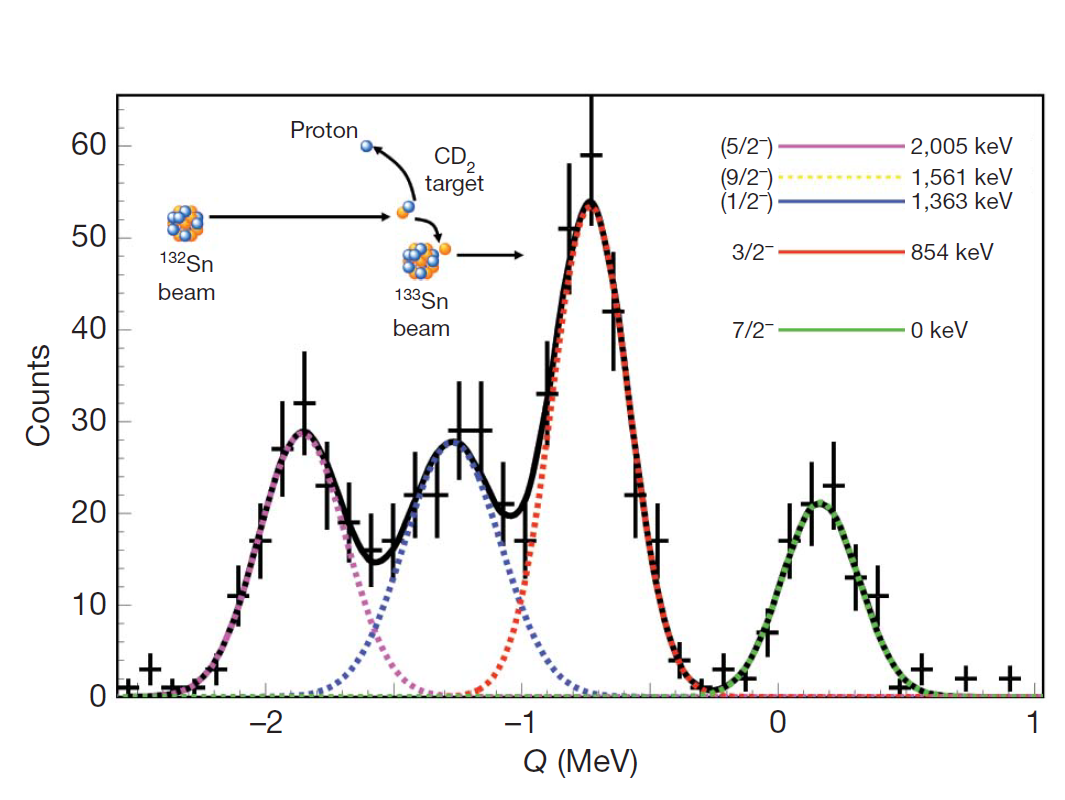
The magic nature of 132Sn explored through the single-particle states of 133Sn
K.L. Jones et al., Nature 465, 454
Atomic nuclei have a shell structure in which nuclei with ‘magic numbers’ of neutrons and protons are analogous to the noble gases in atomic physics. Only ten nuclei with the standard magic numbers of both neutrons and protons have so far been observed. The nuclear shell model is founded on the precept that neutrons and protons can move as independent particles in orbitals with discrete quantum numbers, subject to a mean field generated by all the other nucleons. Knowledge of the properties of single-particle states outside nuclear shell closures in exotic nuclei is important for a fundamental understanding of nuclear structure and nucleosynthesis (for example the r-process, which is responsible for the production of about half of the heavy elements). However, as a result of their short lifetimes, there is a paucity of knowledge about the nature of single-particle states outside exotic doubly magic nuclei. Here we measure the single-particle character of the levels in 133Sn that lie outside the double shell closure present at the short-lived nucleus 132Sn. We use an inverse kinematics technique that involves the transfer of a single nucleon to the nucleus. The purity of the measured single-particle states clearly illustrates the magic nature of 132Sn.


